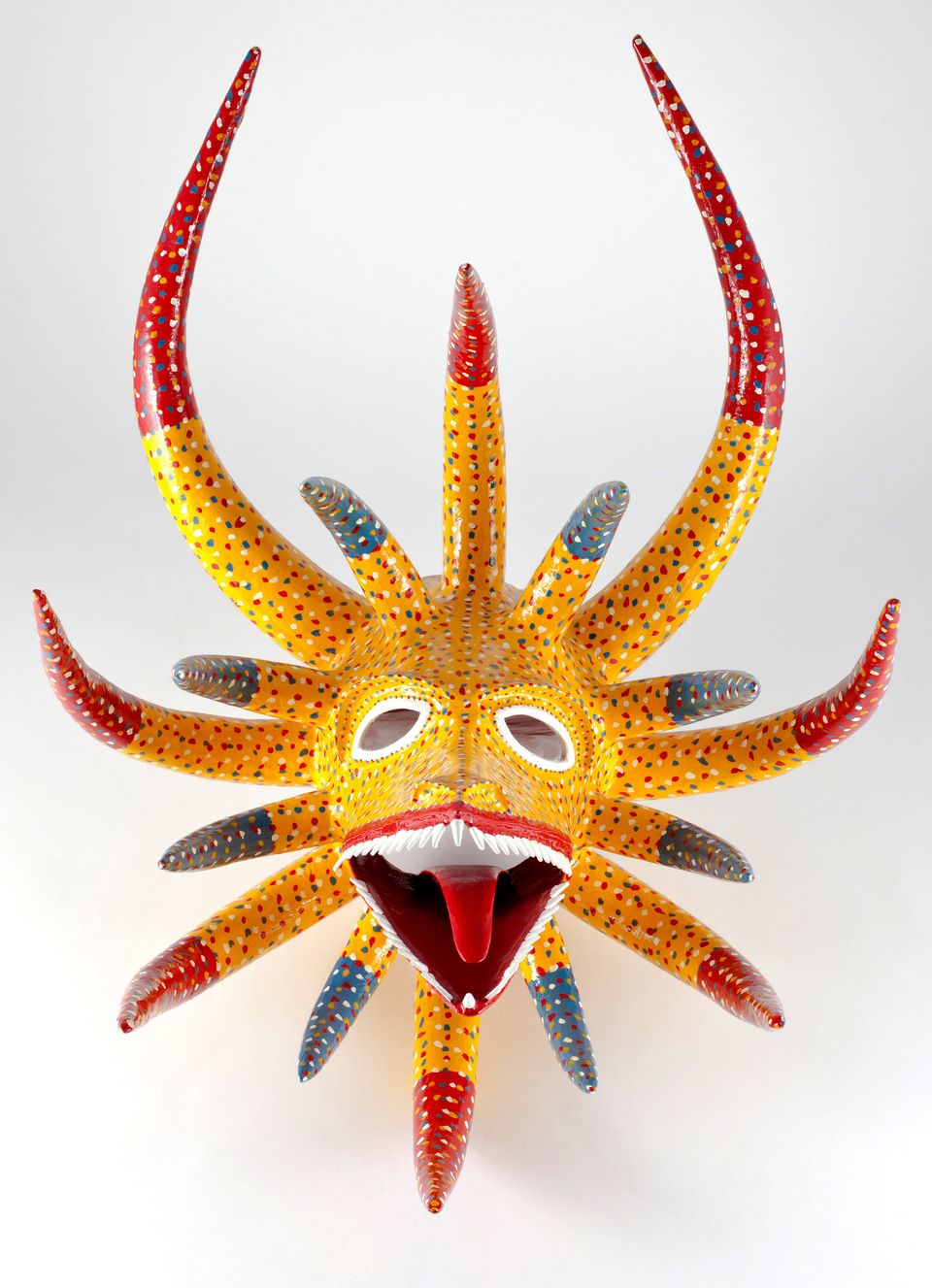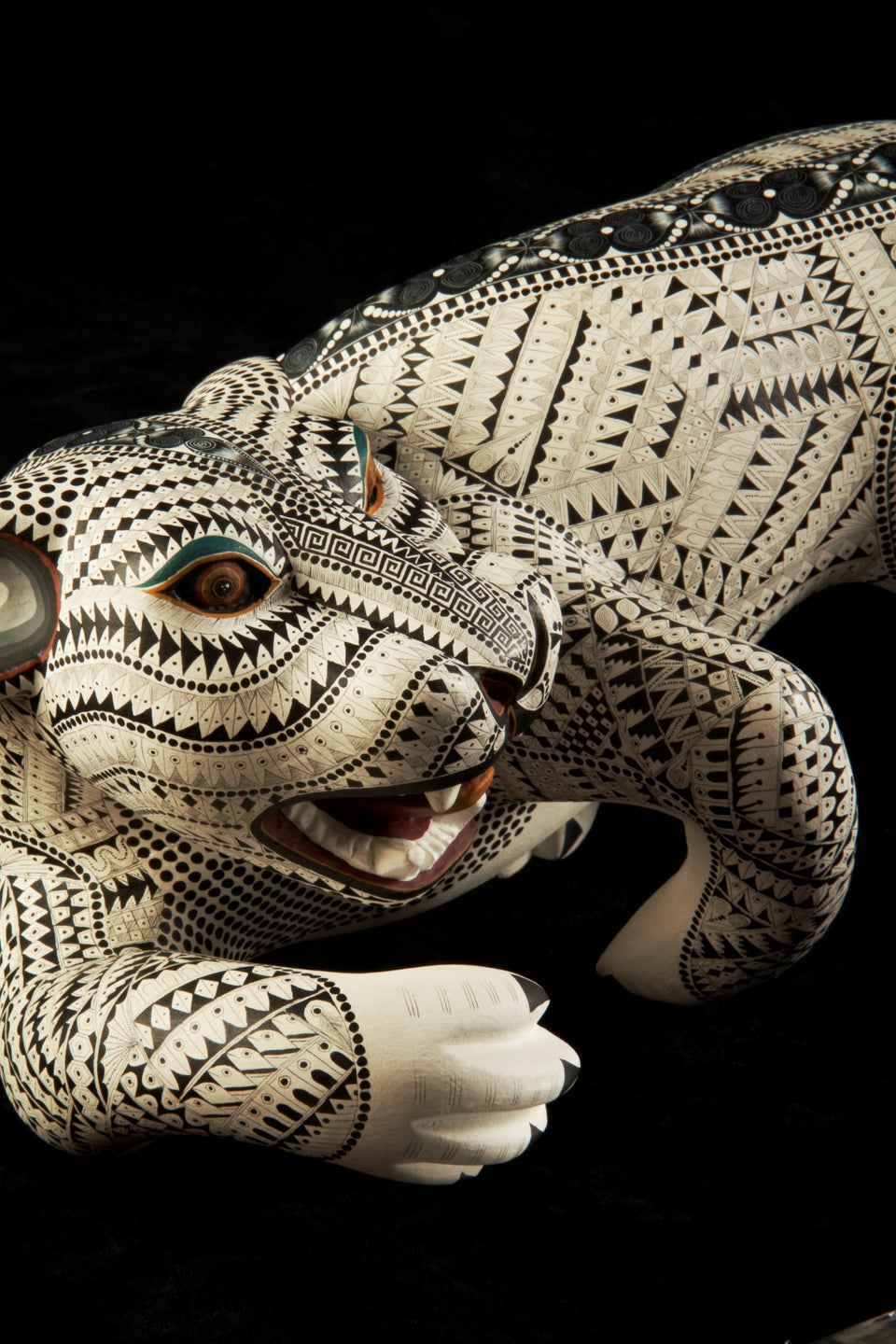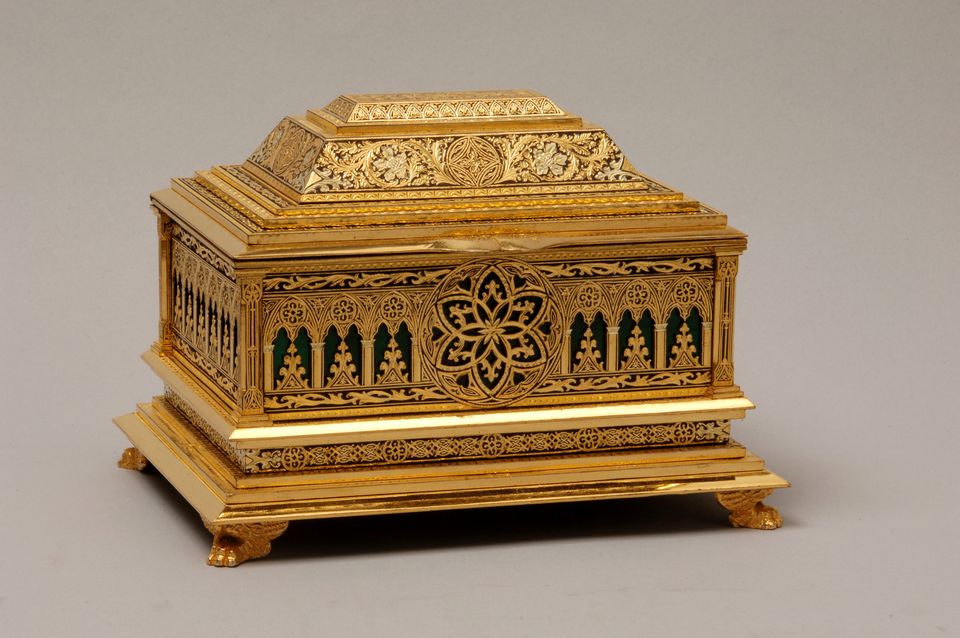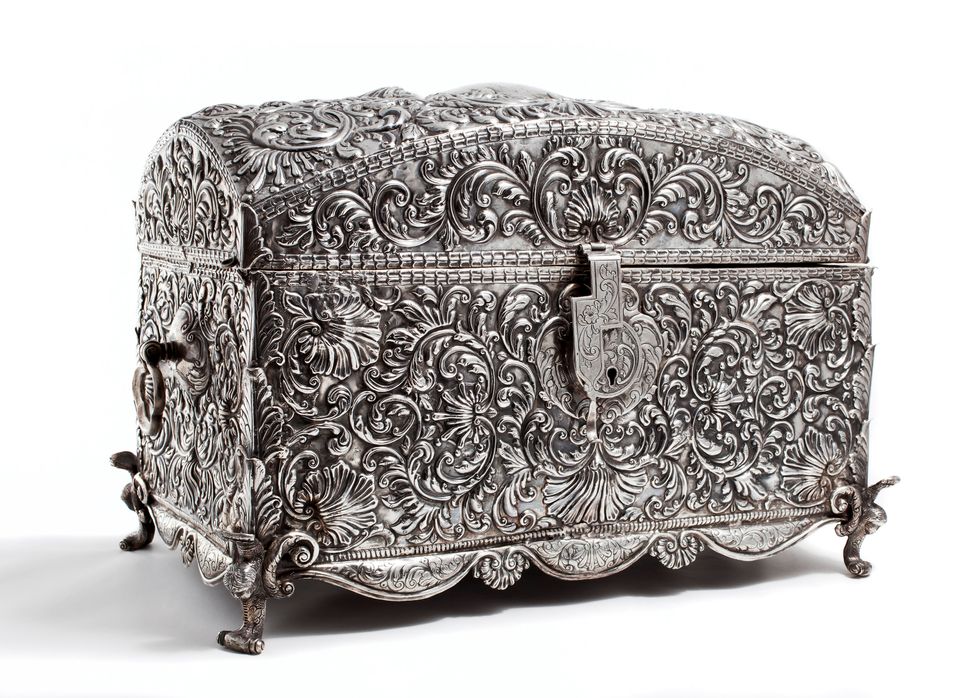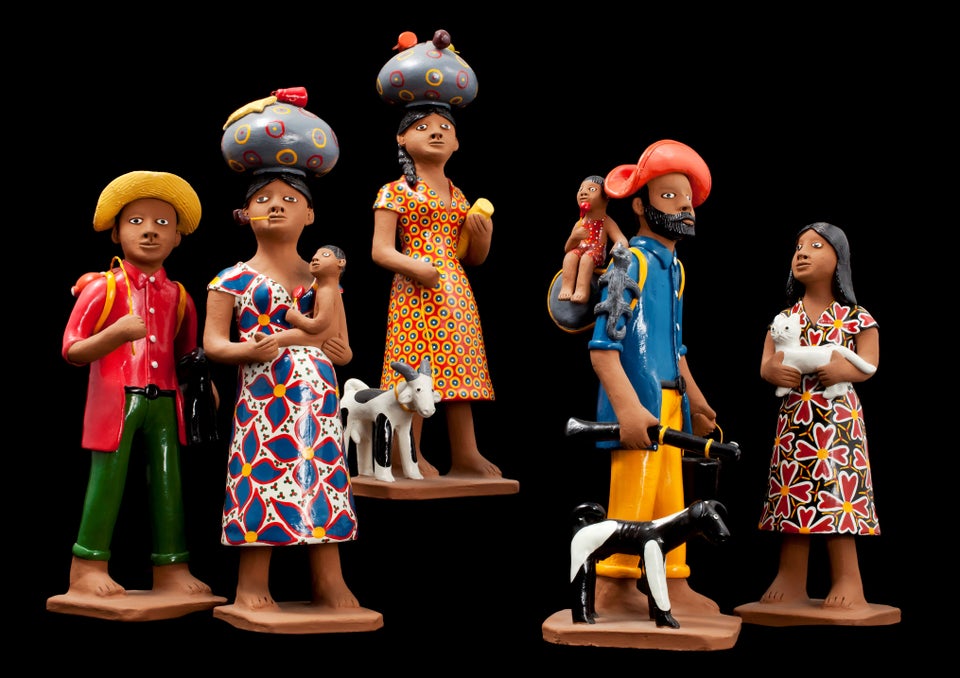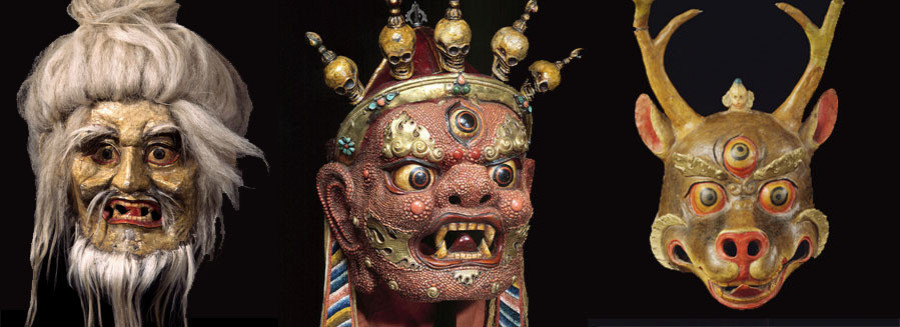
Whether it's a helmet for the big game, a disguise for a stealthy rendezvous, a transformative adornment completing a costume, or a headpiece dutifully positioned before singing in the mirror, most of us are familiar with the otherworldly metamorphosis that goes with donning a mask. What you may not know, however, is just how far back the mystifying powers of the curious accessories originated, and just how widely their traditions extend.
"Everybody has put on a mask in his life somehow, whether as a child or at some point later on," explained Jan Van Alphen, Director of Exhibitions, Collections & Research at the Rubin Museum of Art, in an interview with The Huffington Post Arts. "A mask is something everybody knows and is accustomed to. We don't have to teach people what a mask is. However, I wanted to explore the meaning of masks on multiple levels, starting with the oldest cultures."

Dance Mask, Rubin Collection
Thus "Becoming Another" was born, a spellbinding exhibition featuring 100 masks made over the course of 500 years, stemming from Mongolia to Japan to Siberia to the Northwest Coast of America, to name a few locales. The show will explore the early manifestations of the aesthetically charged disguises, comparing and contrasting their visual and practical qualities. Nostrils flare into multicolored curlicues, mouths contort into scowling maws, faces resemble monkeys, dragons, Hindu gods and melting, horned ghosts. Despite the differences -- and there are many -- the exhibition as a whole displays a resounding human urge to dress up, to escape and to transform, if only for a brief period.
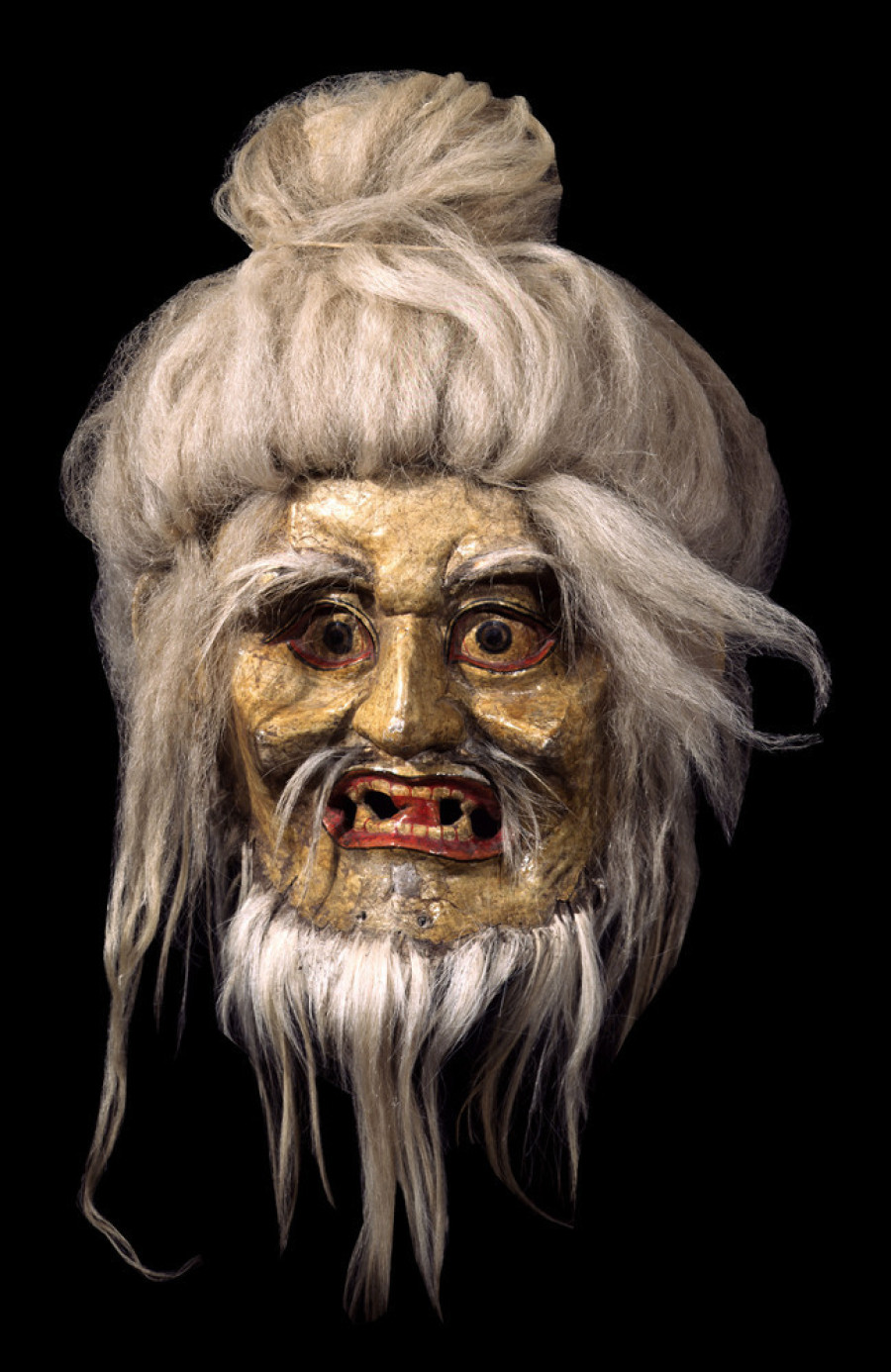
Mask for Ritual Dance, Mongolia, Rubin Collection
The exhibition revolves around three predominant historical uses of the mask that transcended geographical boundaries: shamanism, communal ritual, and theatrical performance.
"A Shaman is someone who could get in contact with the spirit world, if we believe in that," van Alphen explained. "The Shamans have three worlds: the heavenly world, our world, and the underground world, and spirits live in all of them. Spirits have an effect on our daily lives and can influence them in good and bad ways. Shamans have the power and technique to reach spirits and make them their companions, as well as to attack or appease spirits of beings that were unhappy in a previous life and therefore are still creating havoc. It is one of the oldest religious world views to exist and it still exists today."
To engage with the spirits, Shamans don masks to communicate with or take on the identity of a supernatural entity.Such practices were popular in the South of France, Spain, North Africa, Siberia and Russia, among other destinations.
"The second use of masks is in communities, for community rituals," van Alphen continued. "We use examples from Tibet, Nepal, Mongolia, Buddhist Monastic dance, wherever the whole community is taking part. The public is there to celebrate getting something done from spirits or the gods -- fertility, a good harvest, many good things. It's something that everybody takes part in and many people are masked for that purpose. It's a communal rite."

Mask Horned, American Museum of Natural History
The final phase of the exhibition focuses on masks used for theater and storytelling, which has existed in Japanese tradition since the 7th century. "Noh emerged in the 13th and 14th centuries, and developed as one of the major forms of dance theater all over the world. It consists a very small stage, and only three people are acting. They use masks, and very few other tools. This is why the mask becomes so important, with the few elements involved. In the Himalayan world, stories were mainly translated into masquerades, helping people learn how to behave, how to live a proper Buddhist life, and how they would be judged later on by the judge of death."
Despite the three categories guiding the exhibition, many masks represent a hybrid interplay between the various traditions, allowing new, heterogeneous traditions to emerge. The masks, variegated in size, weight, material, style and species, depict the many faces we yearn to adopt when looking for respite from ourselves.

Mask, American Museum of Natural History
Van Alphen hopes the exhibition will engage with impenetrable historical topics through an accessible and familiar vessel. "We try at the Rubin to make things worthwhile, interactive; we want people to feel a connection with the things that we do. We present very difficult topics like Tantric Buddhism, for example, but through something simple like a mask. It's easier to grasp. In the end, it doesn't have to be something philosophical or theoretical -- it's all about human beings. It's about drive."
"Becoming Another: The Power of Masks" runs until February 8, 2016 at the Rubin Museum of Art in New York.
Related
Before You Go




